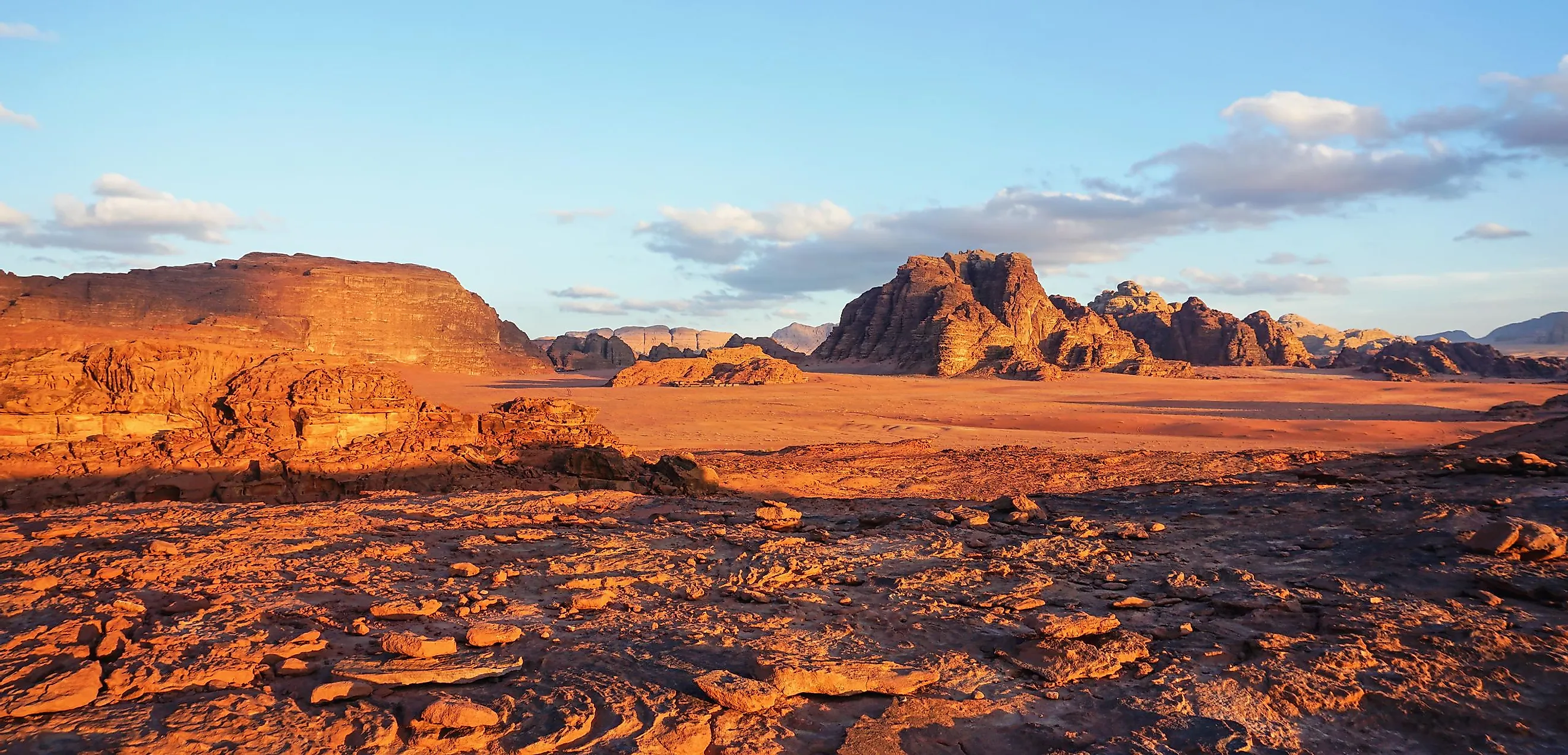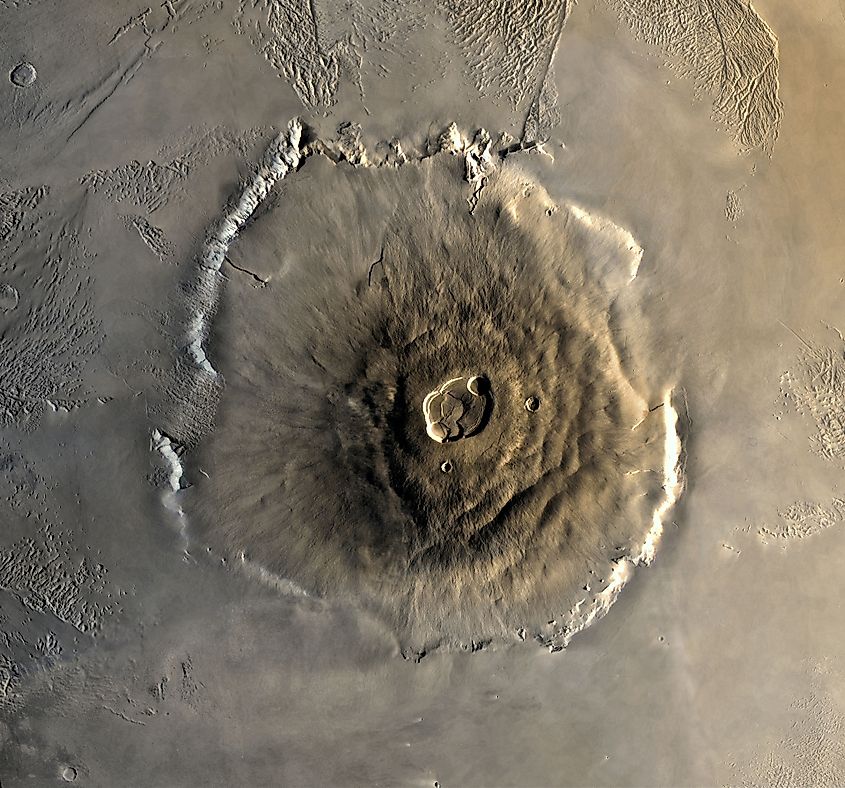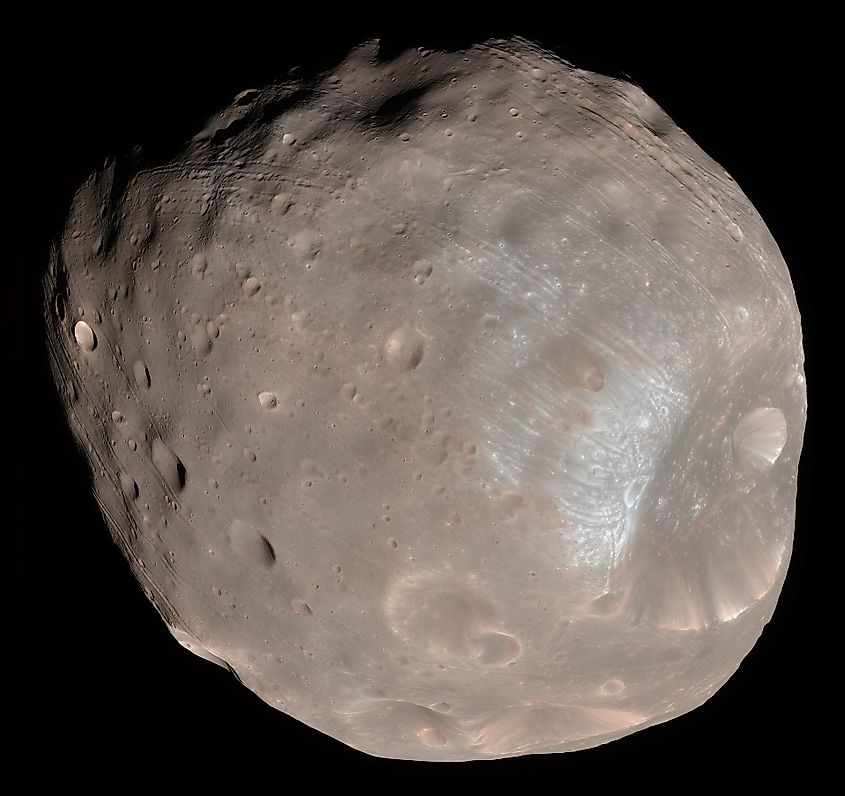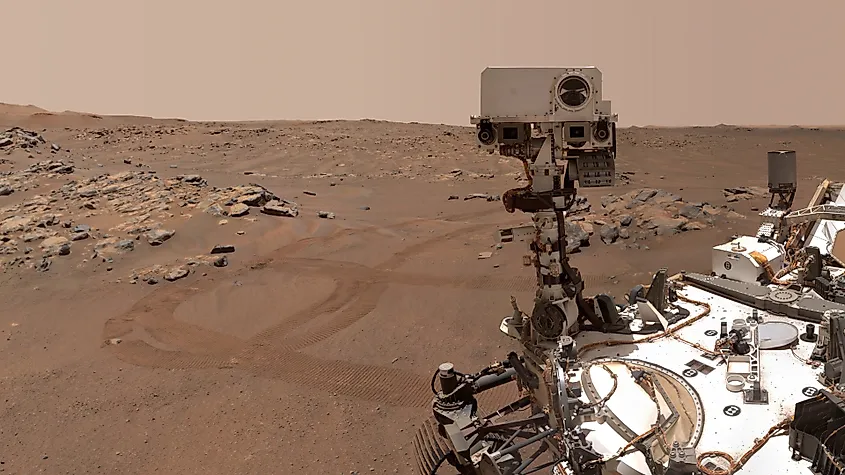
10 Facts About Mars
Mars is the second closest planet to Earth and is probably the most studied world in our solar system. In fact, we know more about the Martian surface than we do about the Earth’s oceans. NASA has spent more time, money, and resources going to Mars than it has on any other planet. Here are ten facts about Mars that you may or may not know.
1. Mars Is Red Because It’s Rusty
Mars is known as the Red Planet, and the reason why the surface is red is due to the fact that its rocks and soil contain small amounts of iron that have rusted over time. Rather than being the Red Planet, perhaps a more appropriate name would be the Rusty Planet.
2. Mars Has The Largest Volcanos

Mars is home to the largest volcano in the solar system, Olympus Mons. Olympus Mons is 374 miles (624 kilometres) in diameter, making it roughly the same diameter as the state of Arizona. By height, Olympus Mons is 16 miles (25 kilometres) high, making it three times higher than Mount Everest. Olympus Mons is so big that if you were to climb to its summit, the sheer size of the mountain would exceed the maximum distance at which you can see. You would not even notice you were on top of the solar system’s highest peak.
3. Mars Has Two Moons

Other than Earth, Mars is the only other rocky planet that has moons. The two moons of Mars are called Phobos and Deimos, both of which are significantly smaller than our moon. Phobos is the larger of the two, having a diameter of 13.7 miles (22 kilometres). Deimos is smaller than Phobos, having a diameter of only 7.7 miles (12.4 kilometres). Both moons are so small that their gravitational pull is insufficient to pull themselves into circular shapes. Rather, they appear distorted, looking more like potatoes than moons.
4. Mars Is Smaller Than It Should Be
Based on models of how the solar system formed, Mars should actually be larger than the Earth, yet it is smaller than both Earth and Venus. Why Mars is so small remains a mystery, yet it is possible that Jupiter moved closer to Mars during its formation and stole material that would have otherwise been used in the formation of Mars.
5. Mars Once Had Liquid Water
One of the most well-known facts about Mars is that it once had vast amounts of liquid water. Billions of years ago, Mars had a dense atmosphere and a strong greenhouse effect, which allowed for the existence of liquid water, despite the fact that Mars orbits outside of the sun’s habitable zone. Scientists have found clear evidence of ancient rivers, lakes, seas, and even oceans on the Martian surface.
6. Mars’s Atmosphere Was Destroyed By The Sun
In the past, Mars had an atmosphere that was comparable in density to the Earth’s, yet today, the Martian atmosphere is negligible. Unlike Earth, Mars no longer has a magnetic field that can deflect solar radiation. The lack of a magnetic field likely occurred when Mars’s core solidified. Without a magnetic field, Mars had no protection against solar radiation, which slowly stripped Mars of its atmosphere.
7. Mars Is The Only Planet Populated With Robots

Mars is currently the only planet in the solar system that is populated entirely by robots. There are currently five rovers on the Martian surface. Humanity currently has no other rovers on any other planet, making Mars a planet of robots.
8. Sunsets On Mars Are Blue
On Earth, sunsets are orange and yellow, and our daytime skies are blue. On Mars, nearly the opposite is occurring. During the day, the Martian sky is red, while its sunsets are blue. As the sun sets on Mars, red light from the sun is filtered out and blue light is scattered, making the sunset appear blue.
9. Mars Will Have A Ring One Day
Mars’s largest moon, Phobos, is gradually moving closer to Mars. Astronomers estimate that in about 500 million years, Phobos will be so close to Mars that it will either be ripped apart by Mars’s gravity or it will crash into the surface. Either way, the result will be the formation of a small ring system around Mars.
10. Dust Storms Make Mars’s Sky Red
Mars would not normally have a red sky. The reason why its sky is red is due to the fact that dust storms and dust devils disperse dust particles into the atmosphere, turning the sky pinkish-red.











